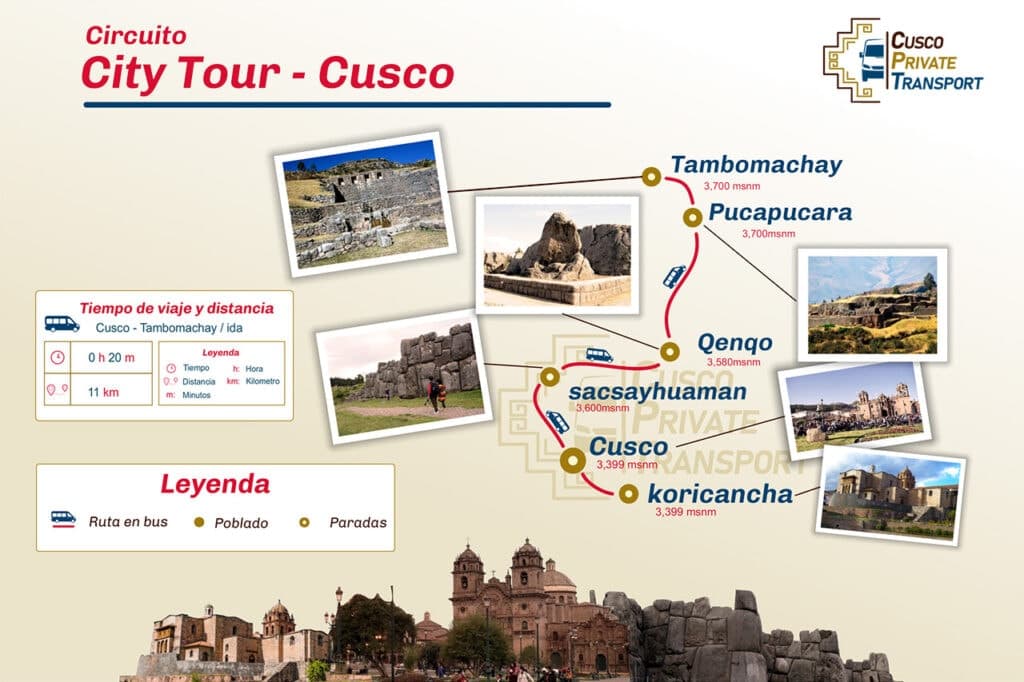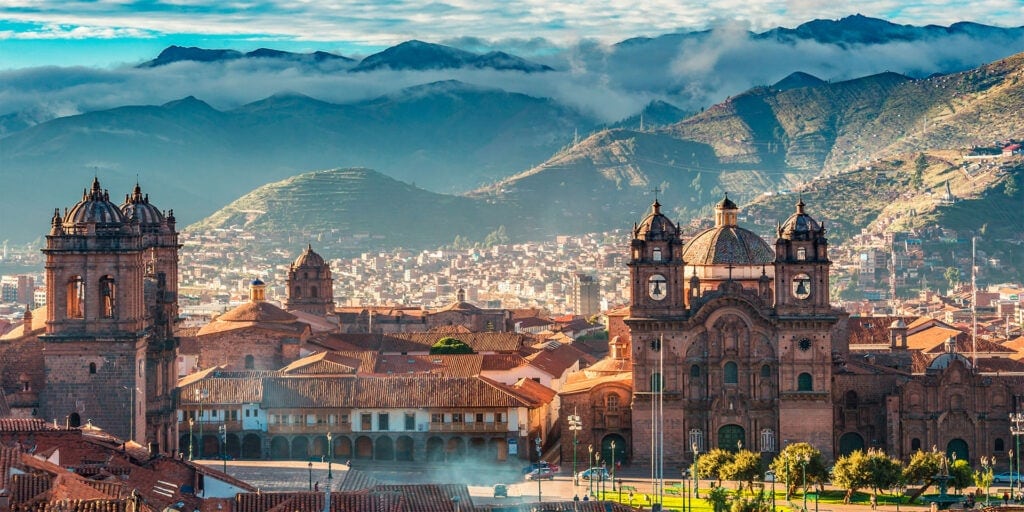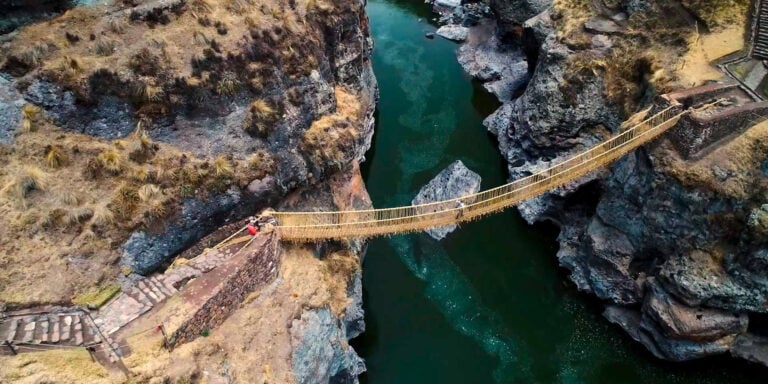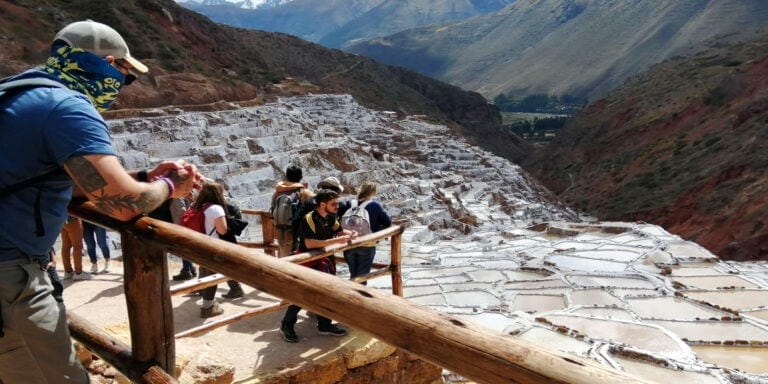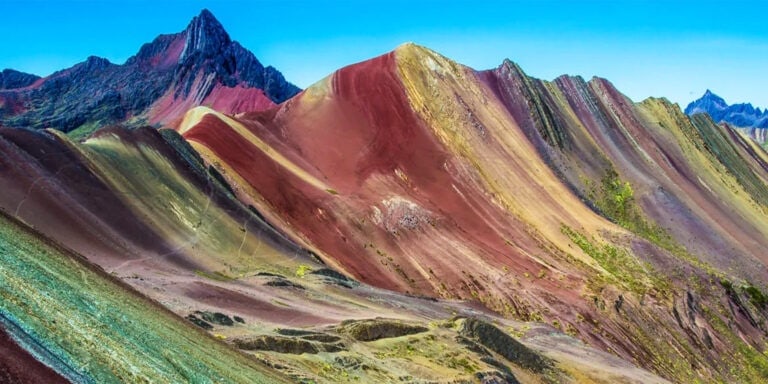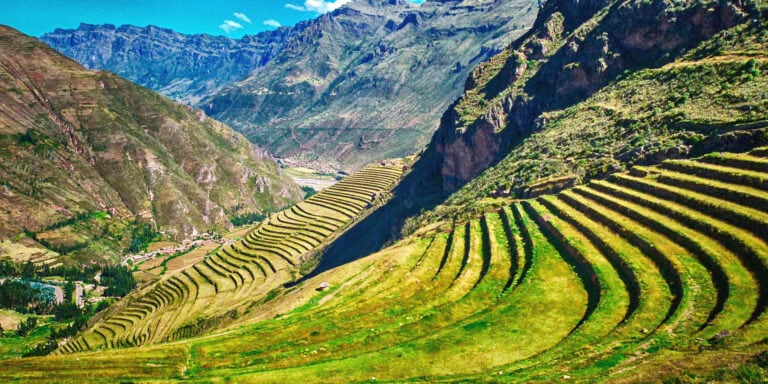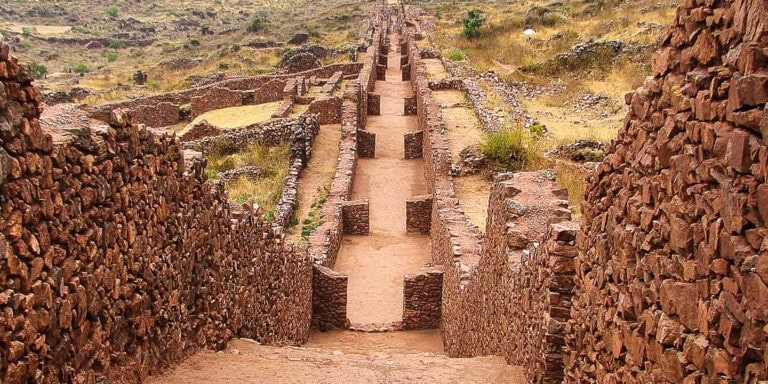The City tour of Cusco is a unique cultural experience, which allows you to know the greatness of the Inca empire and its subsequent colonial splendor. In the city you can visit the Cathedral of Cusco, a religious monument of great historical importance, for the canvas of the Last Supper with the presence of the Cuy (guinea pig) as the main course; and Qorikancha, the most important temple of Inca civilization, which kept gold and silver sculptures in the shape of their deities.
The city tour of Cusco also includes 4 archaeological monuments rich in history and pictorial sceneries, which are located just 15 minutes outside downtown Cusco. Sacsayhuaman is characterized by its bastions and impressive view of the city; Q’enqo was a temple built for the mummification ritual; Pukapukara, a control and surveillance post; and finally, we find the ceremonial fountains of Tambomachay.
THE CATHEDRAL:
The Cathedral of Cusco, located at the main square of the city, is an invaluable Catholic monument, which was built in 94 years (between 1560 and 1654), for this reason, it was influenced by various European artistic currents such as Renaissance, Mannerist and Baroque.
Inside the cathedral there are wooden altarpieces finely finished in gold leaf, to give it shining and appearance of gold. This metal used in the decoration was looted from the Inca temples. Most of the canvases that decorate the church were painted by indigenous artists of the Cusquenian school of arts. The one that stands out is the painting of the Last Supper, with the baked guinea pig like the main course, making an allegory to the typical dish of Cusco.
QORIKANCHA:
Qorikancha, known as the sun temple, was the most important shrine of the Inca culture. The term Qorikancha comes from two Quechua words: Qori means gold and Kancha, enclosure or stone wall. According to the spanish accounts, the first ones to arrive in Cusco, they describe that its “whole stone walls were covered in gold.”
Within the Qorikancha enclosures there were finely shaped statues, made in gold, silver and other precious alloys. These statues belonged to the gods of all the Inca empire allied nations.
Currently, on the Qorikancha inca temple there is a colonial convent, built by the Dominican catholic order.
SACSAYHUAMAN:
Sacsayhuaman is located northeast Cusco, over 3,632 meters above sea level. It is considered the architectural emblem of the city, with cyclopean walls built with gigantic stones that weigh approximately 80 to 120 tons each. These stones were brought from more than 23 kilometers away, crossing rugged terrains, using still unknown engineering techniques.
Sacsayhuaman was a temple erected in honor of the god Illapa, or the god of lightning, thunder or lightning, in the Inca pantheon. On the top of this temple there is an impressive lookout point with the best panoramic view of the city.
Q´ENQO:
Q’enqo is a rock formation, created by the last ice age melting that dissolved some minerals of the outcropping, creating a natural cavern. Where the intervention of the skilled hands of Inca architects adapted the place into a chamber for the mummification ceremony. Inside Q’enqo cave, the Incas took advantage of the chilliness, less than that of room temperature, which served to preserve the corpse as the mummification ritual took place.
PUKAPUKARA:
PukaPukara is a pre-Hispanic construction that presents an outstanding tower, surrounded by terraces and walls as a fortress, for such fact it is believed that it was a military watchtower. The name PukaPukara comes from two Word roots, “puka” is a Quechua term that means “red”; while “pukara”, a loan Term from Aymara (a language still spoken in the high plateau of Peru and Bolivia), means observatory or viewpoint. These so called pukaras were distributed throughout the Inca empire, built at the top of the mountains to send and receive messages. Through the reflection of bronze mirrors they could quickly communicate one city to another, a sophisticated innovation for that time.
TAMBOMACHAY:
Tambomachay was an Inca temple where you can see water fountains carved in stone, with stone channels through which the vital liquid still flows. In Tambomachay fountains, the way the channels and fountains are divided is striking, referring to the concept of the Inca trilogy, the future, the present and the past (or the condor, the puma and the snake). In this temple the purification ritual and the ceremony of balance (between the dry and rainy seasons) were performed, this was very important for agriculture and the livelihood of Andean society.
RECOMMENDED! For a better travel experience, we recommend you hire a professional tour guide.
INCLUDED:
- Private tourist transport at your disposal.
- Professional driver service.
- Visit the tourist attractions described in the program. Available time up to the costumer.
NOT INCLUDED:
- Cusco Tourist Ticket (BTC) – Circuit I (PARTIAL TICKET).
- Meals.
- Tips.
WHAT TO BRING:
- ID or Passport.
- Light clothing and windbreaker.
- Plastic poncho for rain.
- Sunglasses.
- Extra cash for snacks or souvenirs.
- Sunscreen.
- Hat or cap to cover yourself from the sun.
- Light shoes.
- Positive mind

